We arose for an unhurried 9:15 a.m. departure in three Land
Cruisers with Ronald and our driver guides Samson and Joseph. Toyota Land Cruisers (generally referred to as
jeeps by
the guides) are much more prevalent here than Land Rovers which our
guides said were much more comfortable but not as rugged. After bouncing all over the tracks in
Tanzania we understood their choice – bad to break down next to elephants or
lions – but sure would have loved better rear suspension for the back seat
occupants. It was a couple of hours’
drive to the entrance of Tarangire National Park, which is renowned for
elephants and baobab trees. We wanted to
enter the
park late in the afternoon, so dawdled along the way at an art
gallery where we had a short talk by the proprietor Robert and then some time
to browse and, perhaps, spend some money with the locals. Indeed, we bought a colorful painting and a
rhinoceros carving. We followed this
with a leisurely picnic lunch complete with cold Tanzanian “Tusker” beer at the
park entrance before opening the jeep tops and heading into the park. (According to the bottle “Tusker” is named
after the elephant that killed the company founder. It seemed an auspicious way to start the
safari.)
Straightaway we saw large
groups of impalas (nicknamed “111” because the dark stripes on their rumps and
tail line up to look like those numbers) and warthogs with faces only a
mother
could love. Both of these seemed quite
exciting, although as the trip wore on we found they were “NBD”, guide talk for
“no big deal.” There were more animals
out than we expected in the hot afternoon sun.
Samson, our driver, had a good eye for picking them out of the bush, and
we passed close by herds of Cape buffalo, then saw lions, ostrich, gazelles,
and elephants in the distance. Up close
again were tortoises, banded mongoose, and Abdim’s storks. Baobab trees were everywhere, as well as many
kinds of acacias. The baobabs are well
loved, abused really, by
elephants, who gnaw and rub against the tree trunks
for the moisture they contain, rubbing the bark raw. There are no baobab saplings to be seen because
the elephants eat them all when just young sprouts. Fortunately this tree lives for several
hundred years, but one wonders what will happen someday when all of the big
ones are dead. The signature look of
this park will be no more.
We roll past more animals, for example the common waterbuck
with its rump looking for all the world like a target from the rear, more
impala and leopard tortoises, and then a Big Deal,
a cheetah family. These are not as commonly seen (in fact, cheetahs
are considered endangered), so we were fortunate to see a mother and cub lolling
about on a termite mound. (Termites here
do not eat wood like those in the U.S., they eat plant matter and build huge
dirt mounds in which they grow mushrooms to feed their queen.) During the middle of our drive, a thunderstorm
produced a driving downpour which made observing more difficult but still
productive.
In addition to the mega fauna and assorted minor fauna, we
see numerous bird species including the 3-foot tall marabou stork, tawny eagle,
red and yellow barbet, yellow neck spurfowl, and helmeted guineafowl (with bright
blue helmet). For birders in the group,
it is great opportunity to knock off lots of birds on their life lists. Towards the end of the drive we come across golden
jackals, more Cape buffalo, and a couple of male lions close to the road. The drivers know the roads within this
park
so well, they wheel and detour all over the place looking for targets of
opportunity, and they are usually successful.
We had a heck of a first day on safari.
Hot, dusty, and bruised from bouncing around in the jeeps,
we leave the park and drive for an hour to our home for the next couple of
nights, the Lake Burunge Tented Lodge on the sandy shore of said lake. We each have a bungalow composed of a wall
tent set up on a
platform with front deck and thatch roof, and solar powered
lights and hot water for showers. Like
the Olasiti Lodge, the beds are all equipped with full mosquito netting, and it
seems more necessary here than it was in Arusha where we rarely saw a mossie. The bungalows are scattered along a path and
we return to the open-air reception/ bar/ dining area overlooking the lake for
our meals.
We were told that due to
several dangerous life forms in the area (i.e. hyenas, black mamba snakes, and
zebras – really, zebras??), we must be escorted by lodge staff (Maasai warriors
armed with bows and arrows or spears) along the paths after dark. This seemed pretty safe at the time, though
later we had reason to doubt. In
addition, our room key chain has an emergency whistle on it to call for help or
a night escort from our bungalow, if needed.
Kind of like a telephone but less precise. Despite the isolated setting, we had a fine
meal on the lodge deck and were ready for dessert when a torrential downpour
began so we retreated back under the roofed area. After it stopped, we were all escorted back
to our wall tents and tucked ourselves into the mosquito netting for a pretty
sound night’s sleep.

 Tarangire National Park, Tanzania
Tarangire National Park, Tanzania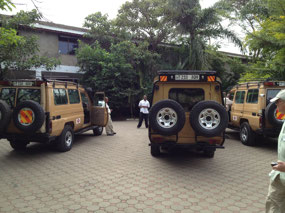
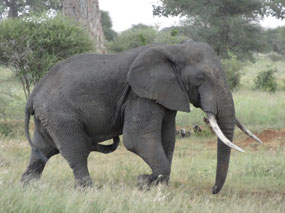
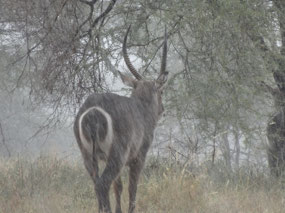

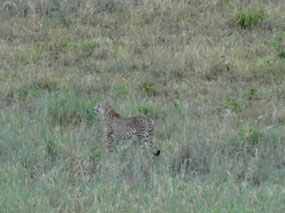
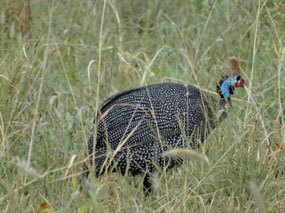
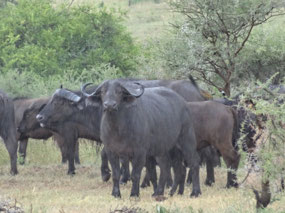
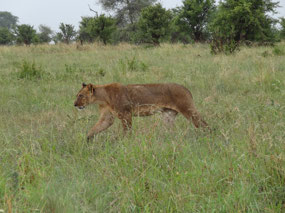
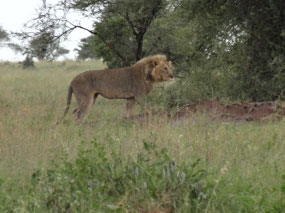




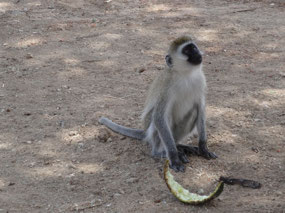
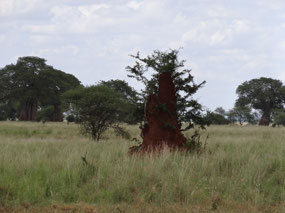
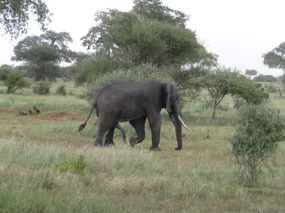
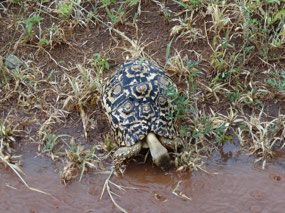

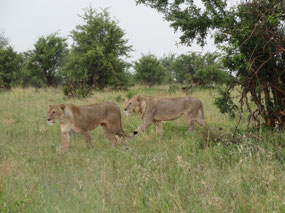
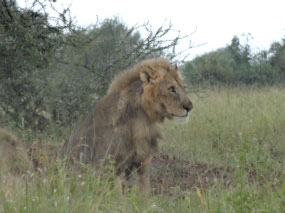
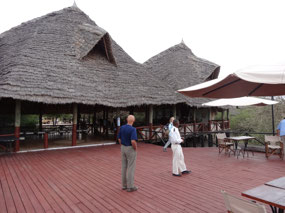
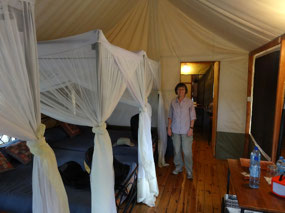
2025-05-23